HSJ is now hosting the Patient Safety Watch newsletter, written by Patient Safety Watch chief executive James Titcombe.
Good afternoon and welcome to this edition of the Patient Safety Watch newsletter. Since the last edition, it’s been an especially busy time for patient safety news, so let’s get stuck in.
NHS workforce plan published
The big news (that you probably haven’t missed) since our last newsletter is the long awaited publication of the NHS long-term workforce plan, described by NHS England chief executive Amanda Pritchard in the report’s foreword as “one of the most seminal moments in our [the NHS’s] 75-year history.”
Jeremy Hunt tweeted a short thread about the plan which is well worth a read. He also told me the plan “is the biggest single step for patient safety since the introduction of independent [Care Quality Commission] inspections – inspired in no small part because I remember people like Julie Bailey telling me safe staffing was the biggest change that needed to happen post Mid Staffs”.
For a comprehensive analysis of how the plan has been received, this piece from the Nursing Times provides a great overview and includes responses and thoughts from politicians (from all sides), NHS organisations, health unions, royal colleges, representative bodies, regulators, and patient organisations.
At Patient Safety Watch, our independent research report, published last year, found “workforce shortages across nearly all areas of care present one of the most immediate threats to patient safety” and recommended the government must “publish a workforce plan to demonstrate how the workforce gaps will be filled”.
In my role at Patient Safety Watch, as well as a long-term patient safety campaigner, I see the plan’s publication as a truly important and significant milestone. However, the key to success will, of course, be in the implementation and independent validation and scrutiny.
As this newsletter was being finalised, the National Audit Office confirmed a commitment to carry out an independent assessment of the modelling behind the plan to “consider whether NHSE’s current approach to workforce modelling…[is] a reasonable basis for regular strategic workforce planning” – a welcome move that should provide further assurance.
In other news this edition:
‘We see the same repeated failings time and time again’
The Parliamentary and Health Service Ombudsman’s report – Broken Trust: Making Patient Safety More Than Just a Promise – warned the health service needed to do more to learn from mistakes. Its analysis of more than 400 serious health incidents from the last three years also found 22 cases of avoidable death.
Ombudsman Rob Behrens said: “Every time an NHS scandal hits the front pages, leaders promise never again. But the NHS seems unable to learn from its mistakes and we see the same repeated failings time and time again… However, the NHS itself can only go so far in improving patient safety. One of the biggest threats to saving lives is a healthcare system at breaking point.”
The report also found “the physical harm patients experienced was too often made worse by inadequate, defensive and insensitive responses from NHS organisations when concerns were raised”.
The report makes a powerful and compelling case for further change and contains several important recommendations, including that the Department of Health and Social Care should “commit to funding further independent advocacy to support harmed patients, families and carers when they raise concerns or seek answers after an incident”. This recommendation echoes calls made by other organisations, including by Action against Medical Accidents and in the Harmed Patients Alliance’s Signpost to nowhere report, published last year.
This report must now result in renewed action and commitment. Let’s keep a close eye on how the recommendations are progressed.
There’s a danger of another Mid Staffs, says Sir Robert Francis
Sir Robert Francis – who led the inquiry into patient deaths at Mid Staffordshire – has told BBC News that whistleblowers are still being punished for speaking up, discouraging others from stepping forward.
When asked by the broadcaster if he felt the freedom to speak up system could prevent another scandal, he said: “Am I confident, 100 per cent? No. There is a danger of it happening again when pressures similar to those that existed at the time of Mid Staffs come about.
“But I think the way to stop it is to think all the time about the culture and make sure you’ve got an open culture, a supportive one and one that treats the patient first by listening to the staff’s concerns about them.”
Meanwhile, The Guardian has reported the British Medical Association has made similar calls for better protection for whistleblowers. The newspaper quotes council chair of the doctors’ union Phil Banfield as saying: “Someone who raises concerns is automatically labelled a troublemaker. We have an NHS that operates in a culture of fear and blame.
“That has to stop because we should be welcoming concerns, we should be investigating when things are not right.”
National investigation into mental health inpatient services announced
The government has instructed the Healthcare Safety Investigation Branch to launch a national investigation into mental health inpatient services when it gets its new powers this October. It follows a string of high-profile care scandals, including at the Edenfield Centre in Manchester.
In a speech to Parliament, health secretary Steve Barclay said HSIB would “have the teeth and work at speed” as well as “the power to fine those who refuse to give evidence when they are required to do so”.
During the same speech, Mr Barclay also announced the inquiry into 2,000 deaths over the past two decades at Essex Partnership University Foundation Trust would be upgraded to statutory status.
Patients still being sent miles away from home
Sticking with inpatient treatment for mental health patients, the government promised to bring an end to inappropriate out of area placements for mental health patients by March 2021, but analysis by the Royal College of Psychiatrists has discovered there have been almost 9,000 such placements in the last two years. Of these, the majority (56 per cent) led to patients being sent more than 100km away for care.
RCPsych president Adrian James said: “This unacceptable practice – sending patients hundreds of kilometres away from their homes and families – has likely been happening for decades. It risks patients’ mental health to such a degree that they often remain in hospital for longer… If these placements continue it is ultimately patients who will pay the price.”
In light of the findings, RCPsych and the BMA have written to mental health minister Maria Caulfield to call for an end to this practice, as well as urgent investment in mental health services.
Government plans to make visiting a legal right…
The DHSC has launched a consultation which proposes making visitors in health and care settings a legal right. The planned right will be enforced by the CQC, with the new law providing the watchdog a “clearer basis for identifying where hospitals and care homes are not meeting the required standard”.
Many restrictions on visitors were imposed to prevent the spread of infection during the pandemic, although concerns were raised – including in coroners’ reports – that this had a damaging effect on patients’ safety and wellbeing. However, the government said its proposals were prompted by reports access was still being “unfairly denied”, despite guidance from government and NHSE.
…but rejects calls to set target to end disparities in maternal deaths
Responding to an earlier report from the Commons women and equalities committee, the government said it did “not believe a target and strategy is the best approach towards progress” to end disparities in maternal deaths, adding a “concrete target does not necessarily focus resource and attention through the best mechanisms”.
The latest data shows black women are nearly four times more likely to die in childbirth than white women, while Asian women are nearly twice as likely to die as white women. Meanwhile, women from the most deprived areas are 2.5 times more likely to die than those in the least deprived areas.
Medicines safety watchdog pledges to embed patient voice in more of its processes
Among its goals set out in its corporate plan for 2023-2026, the Medicines and Healthcare products Regulatory Agency promised to do more to maintain public trust in its work. Its targets include embedding patient voice in its regulatory pathways by March 2024 and piloting public hearings on major safety concerns by March 2025.
The report added: “The MHRA aims to involve patients at every step of the regulatory process to ensure that the balance of risk and benefit is considered from all perspectives. This will require developers to demonstrate that they have consulted patients in the development of new products and the design of clinical trials and investigations.
“It also requires us to systematically involve patients and lay representatives in advisory committees while making regulatory decisions and to respond quickly when people report problems.”
Reflecting on the patient safety strategy
It has been four years since the NHS patient safety strategy was published in July 2019. In a blog post for NHSE, national director of patient safety Aidan Fowler reflects upon the process of taking patient safety responses from “reactive” to “a proactive and ultimately generative safety culture”.
Although Dr Fowler acknowledges the pandemic has delayed some aspects of patient safety work, he also highlights the good which has been done so far – including life-saving care for neonates, a reduction in cerebral palsy in premature babies, deaths prevented through work on long-term opioid use and supporting care homes to better recognise signs of deterioration.
While this newsletter is inevitably full of stories that show we still have a long way to go, it’s only right to pause and acknowledge where progress has been made. Dr Fowler and the national patient safety team have worked incredibly hard on the development and roll-out of the national patient safety strategy and evidence this work is having a positive impact in key areas is something that deserves recognition and celebration.
Sharing some good stuff…
#MatSafety2023 programme is published!
The fantastic charity Baby Lifeline has recently published the full programme for this year’s National Maternity Safety Conference, taking place in Birmingham on 21 September. There are some exceptional speakers and sessions, with this year’s event having a strong focus on sharing examples of excellence and innovation aligned to national priorities for maternity safety improvement. The full programme and details of how to book are available here.
Improving learning following deaths by suicide
The Learn Together project team is carrying out work to try and improve learning for organisations after a death by suicide by speaking to people who have been bereaved by suicide. To help with the work, the team has launched an online survey to understand more about the information people could provide to investigations and explore whether serious incident investigations after suicide can and do meet the primary aim of organisational learning. More information and a link to the survey is provided here.
Organisational culture: problem-sensing and comfort-seeking
Finally for this edition, I wanted to share this brilliant paper in case anyone has missed it. Written by Mary Dixon-Woods and Graham Martin, the paper explores the differences between ‘problem-sensing’ and ‘comfort-seeking’ behaviours. To keep patients safe, organisational governance, leadership and culture needs to pull towards supporting ‘problem-sensing’ behaviours.
If you work in an NHS organisation, to what extent is this the case where you work? Does the wider system (eg regulation, incentive schemes etc) always encourage ‘problem-sensing’ behaviours? Food for thought and a discussion for another time.
That’s all for this edition – please look out for the next patient safety newsletter in two weeks’ time.
In the meantime, thanks for reading and stay safe.
James Titcombe






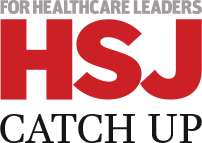
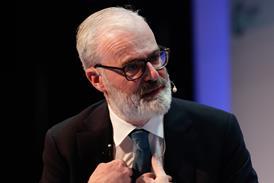
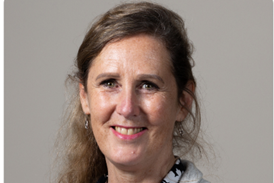














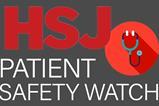
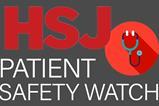







1 Readers' comment